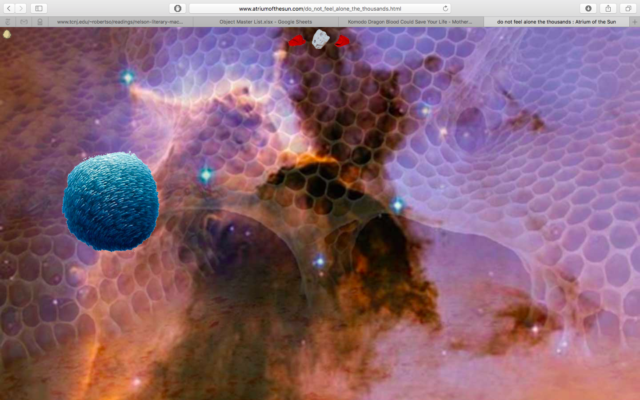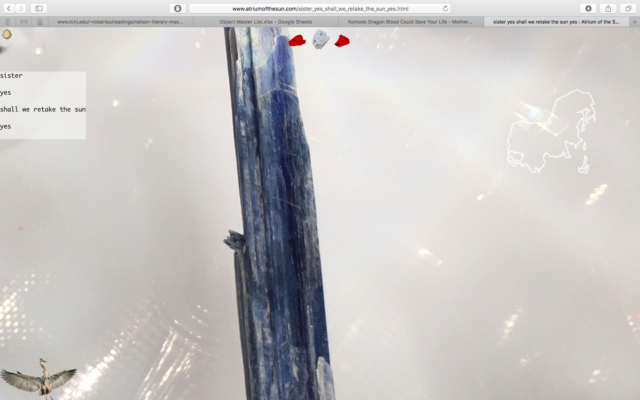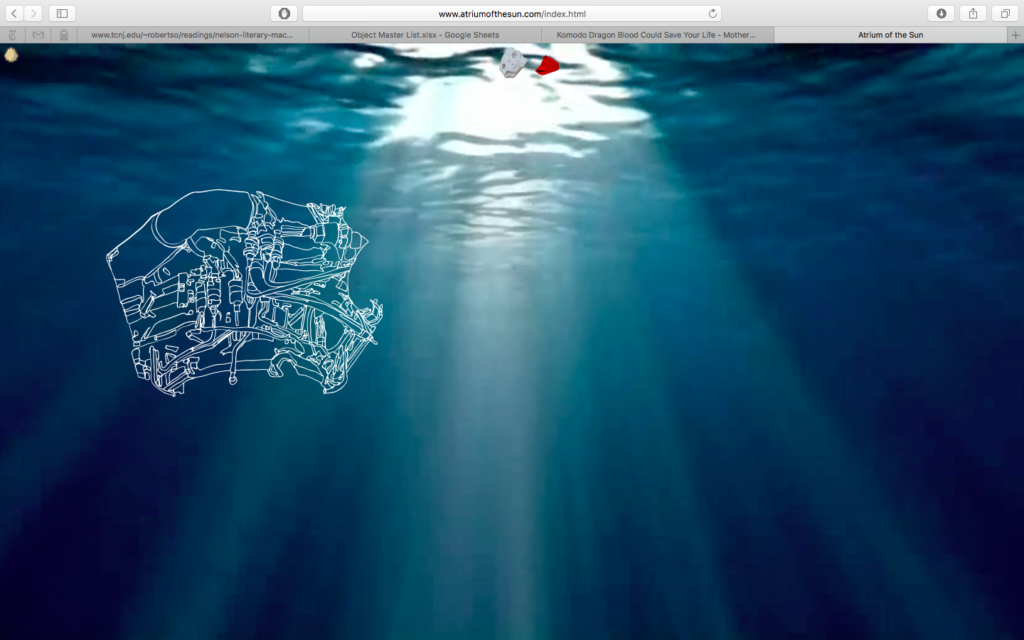“It’s a portal and a cycle of four gates, and a call to retake the sun,” writes Portland-based artist Lisa Radon in an email thread about the recent launch of new online work Atrium of the Sun. Pivoting from a feeling of “how does art even matter now” to something more essential like “a reset button and/or the very quietest clarion call,” Radon talks to us about her interest in the unfolding nature of a work.
Moving through images and words in URL layers and codes that will accumulate over time, the ‘poem’ is a collaboration with Oskar Radon Kimball and is commissioned by Michele Fiedler who is a Mexico City-based curator in residence at Disjecta, Portland.
Primarily working with ‘matter’ from her place of home (oak, carmel stone, quartz, yarrow, rosemary) as well as things that are invisible, Radon constructs matrices, setting up what she describes as ‘speculative frictions.’ In the conversation below, we expand on her interest in activation, folds and the desire to make works “that are both everywhere and nowhere at once.”

** In reference to the cycle of four gates you bring up, and thinking back to your show at Jupiter Woods , there seems to be a conversation that happens from one work to the next. Are they stepping stones in search of the same question every time, or do you consider each piece to feel estranged or facing another direction?
Lisa Radon: A conversation is a nice way to think about it. Each project in whatever form it takes is a part of a greater unfolding in thinking around not the same question but a constellation of ideas. This translation of a Giordano Bruno work I have uses the word accident to mean an aspect of a thing. And if I imagine everything is one thing then each project is an accident of this evolving set of concerns that kind of hovers in a slow bright orbit around my head. : )
** What’s your interest (or relationship) with the centre, is it connected to longing any way? A point that can’t ever be reached?
LR: I don’t relate to longing, no. Longing suggests a kind of impossibility. And I believe in possibility. I think about expanding the imaginary or prototyping eutopias even… with actual outcomes (if somewhat fantastic) in mind. And I relate more to a decentered-ness or distributed everything… the center that is everywhere… pointing to the interconnectedness of all things. Webs are important.

** Are you more interested in being grounded or boundless?
LR: I think I have ideas about alignment with what wants to be which is a kind of grounding… imagine grounding in a particle in a wave. Mostly, I think of being grounded as a bright node in a continuous web. Materially, the anchor of my home place, a valley by the Pacific is important. But although I tend to make rules or parameters for myself, I paradoxically/contrarily insist on being FREE, resisting any form of determinism hardcore. This is not aiming toward boundlessness but just a notion about having or acquiring greater control over one’s horizons than one generally thinks one has or could have, so perhaps we could say: let’s consider an expanded field of operations.
** Is time a medium for you?
LR: That is a great question. I don’t think it is in itself a medium, but I think it both flows under and rides the materials and ideas at hand. It’s the closest I can get to understanding higher dimensions, thus far. I am pretty in love with the method of the Ise shrine which is considered to be 2,000 years old, give or take, although it is completely rebuilt every 20 years. So perpetuity through regular renewal, what is original and copy, and what are the many ways that a thing can persist.
** In talking about your project, you used the words ‘wire whisperer’ to describe it. What did you mean by this?
LR: Let’s just say that we’re all electric beings. And I still like the idea of a kind of techgnosis, if not the existing theorizing around it. When you touch your keyboard, what can you really touch? What about when the interface becomes, as it will, more direct?

** Is this project using layers as means to strip away or build upon?
LR: Oh, I am interested in accretion, the coral reef of ideas, sediment, but also in excavation as a method of recovery. Like what did humans figure out a couple thousand years ago (or 20) that we’ve forgotten that might prove useful today. The Atrium just loves layers generally and the points at which they touch and what touch can do. Folding folds on folds and all that touching!**













